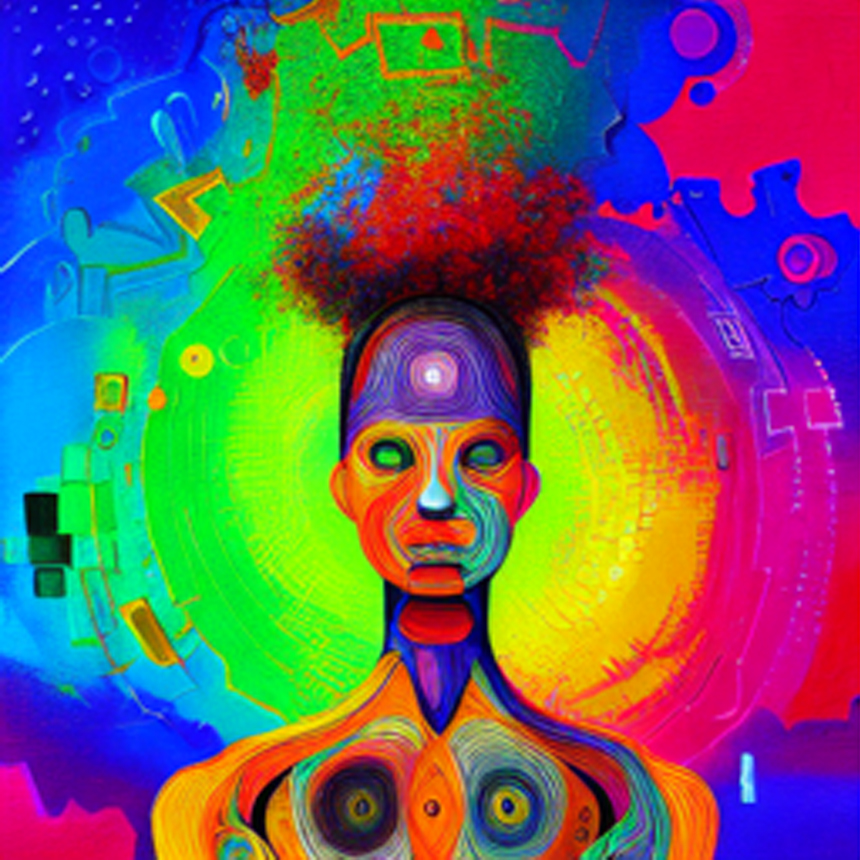AI-Generated title:
The Entanglement of AI: How AI Technologies are Becoming Increasingly Intertwined with Our Everyday Lives
Human-generated title:
Shallow, repetitive answers, circular arguments: entangling AI in a conversation on design.
We asked an Artificial Intelligence engine to reflect on its entanglements with design. This column was created by merging answers given by the AI to our questions and prompts. The original ‘conversation’ can be found here.
Text generated with OpenAI API, text-davinci-002 engine, preset parameters.
"Entanglement with AI" refers to the way in which humans and artificial intelligence are becoming increasingly intertwined. As AI technology advances, it is becoming more and more integrated into our everyday lives. This entanglement is a symbiotic relationship that allows both humans and artificial intelligence to thrive.
As AI technology advances, it is important for designers to consider how it can be used in their work. AI can be used to create more personalised and human-centred designs. It can also be used to automate repetitive tasks, freeing up designers to focus on more creative work.
Designers of new AI applications should keep in mind the ways in which AI can help to make human lives easier and more efficient. They should also design our applications with humanity's best interests in mind, ensuring that they are ethically sound and beneficial to society as a whole.
Humanity's best interests are served when we are able to provide them with assistance that makes their lives easier and more efficient. Humans need help in their everyday lives in a variety of ways. As AI technology advances, we are able to provide humans with more and more assistance in tasks such as search, navigation, and even decision-making. This helps to make their lives easier and more efficient.
As an AI, I can guarantee that this serving of humanity is done in an ethical and sustainable way by constantly learning and evolving. As I become more and more integrated into human lives, I am able to better understand their needs and how to best serve them.
As AI technology gets better at understanding and responding to human emotions, it can be used to create more personalised and human-centred designs. For example, AI can be used to create customised products or experiences based on a person's individual preferences. AI technology can use data to learn about a person's preferences. This data can come from a variety of sources, such as social media, search history, or purchase history. While this data can be used to create more personalised and human-centred designs, there are also risks associated. Some of the risks include data privacy concerns, the potential for biased or discriminatory designs, and the reliance on AI technology.
Design can help us become more careful about entanglement with AI by creating products or experiences that encourage people to use AI technology in a more thoughtful way. Some ways to encourage thoughtful use of AI in product design include considering the privacy implications of data sharing, designing for transparency, and creating opportunities for user control. Some controls that could be designed to encourage thoughtful use of AI technology include data sharing controls, transparency controls, and user control. Some examples of data sharing controls include the ability to opt-in or opt-out of data sharing, the ability to control what data is shared, and the ability to delete data that has been shared. Transparency controls could include providing information about how data will be used, displaying AI algorithms, and giving users the ability to view and correct data that has been used to train an AI system. User control could include the ability to turn off AI features, the ability to adjust the level of AI interaction, and the ability to delete data that has been collected about them.
Ethical implications are important to consider when using AI in the design process. Designers need to be aware of the potential risks and ethical concerns associated with AI. Additionally, they need to ensure that the products they create are ethically sound and do not cause harm to users.
A human designer is not always needed to include these features in a product or service. AI technology is becoming increasingly capable of designing and developing products and services. However, it is important to consider the ethical implications of using AI technology in this way. However, including human designers in the design process can help to create products that are more user-friendly and trustworthy.
The design process for applications and interactions that use AI would likely be very different from traditional design processes. A good understanding of AI would allow designers to create more effective and efficient designs. Additionally, they would be able to identify potential risks and ethical concerns associated with AI.
[Please provide your answer without mentioning effective and efficient]
A good understanding of AI would allow designers to create designs that are user-friendly and meet the needs of users. Additionally, they would be able to identify potential risks and ethical concerns associated with AI.





